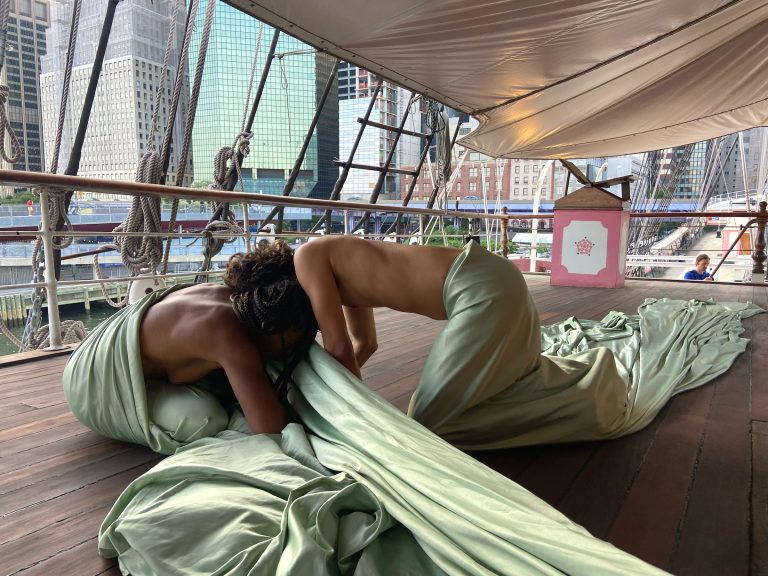“As we used to say in the ’90s, decorate, don’t militarize,” choreographer Miguel Gutierrez shouted to the crowd at Fosun Plaza in Lower Manhattan, as participants donned two-tone tulle, sequined belts and gold tassels, then joined him for an energetic dance to Le Tigre’s “Decepticon.”
The participatory dance event on June 7 marked the start of the Lower Manhattan Cultural Council’s (LMCC) annual River to River Festival, a series of free performances held in public spaces throughout downtown Manhattan over the last month.
In 2002, LMCC founded the River to River Arts Festival with the goal of alleviating residents’ collective fear and grief following 9/11. Organizers selected public art projects designed to foster connection and rebuild community. Now, more than two decades later, the festival is a key component of LMCC’s broader efforts to support independent artistic endeavors throughout the region.

The festival’s 13 projects covered a wide range of disciplines, from Samita Sinha’s Tremora performance art piece featuring Indian folk melodies and Hindustani vocal techniques as a sonic protest against colonial politics, and a multimedia installation by Leslie Cuyjet and jaamil olawale kosoko. On June 22, the festival closed with a conceptual art engagement by Elisabeth Smolarz, who presented several ice cream flavors inspired by her experiences on Governors Island.
The focus of this year’s show is choreographer Mayfield Brooks’ Whale Falls into the Abyss and Whale Falls Reckoningan immersive theatrical experience developed through four years of historical research, explores the intersection between slave ships and whaling. “Since the beginning of the transatlantic slave trade, the bodies of whales and black people seem to bear similarities in that both were attacked, hunted, and consumed,” Brooks wrote in 2021.

The play is set on a 19th century sailing ship. Whale Falls into the Abyss It began with an experimental dance on the main deck: Brooks and performer Camilo Restrepo slowly twisted their half-naked bodies toward each other, then disappeared into a tender embrace through the cargo hold.
Participants then entered the cabin, where Brooks completed the performance with haunting vocals, accompanied by the dissonant tones of electronic cellist Dorothy Carlos. The entire cavernous space reverberated with ghostly music, a tribute to the spirits and ancestors of the transatlantic slave trade.
Brooks’ other works, Whale Falls Reckoninguses light arrangements, sound, and found objects to transform an industrial storage facility into the carcasses of dying whales. Rather than presenting the idea of rebirth from an underwater carcass, the performance urges a collective decay. Brooks encourages viewers to sit with past and present hurts—to feel what it means to be overwrought. As they described in a 2021 statement, “This project was born out of a desire to sit with sadness and anger in a world that discards too much and consumes too much.”

